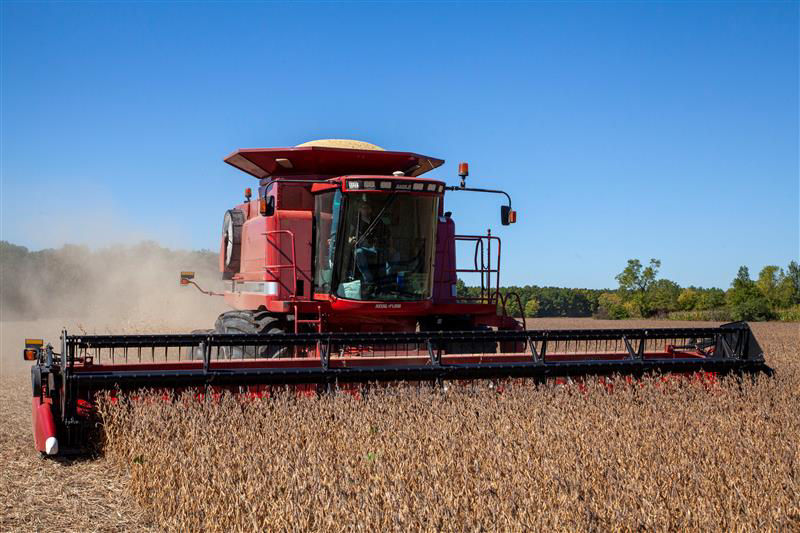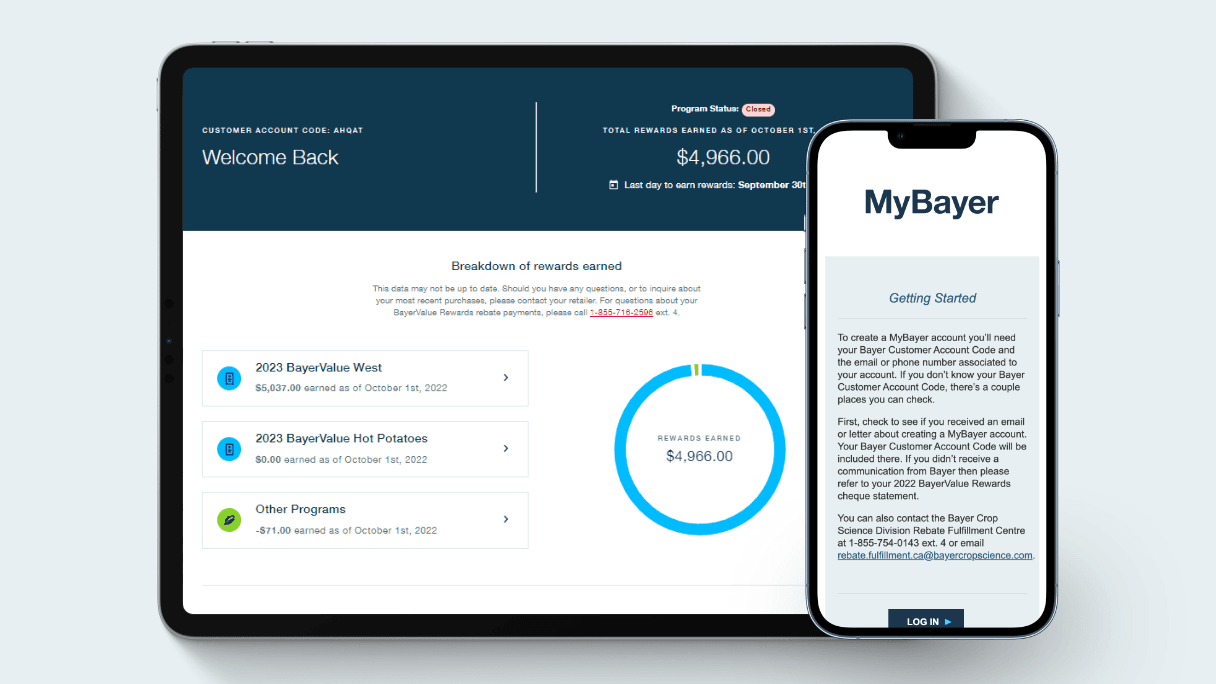5 READ-TIME
Soft farm equipment market may bode well for buyers
January 15, 2025

By Trevor Bacque
Over the past 12 months, commodity prices seem to only be heading south. And while interest rates have eased, they remain high relative to 2021. To nobody’s surprise, this combination has sharply affected the sales of new and used farm equipment, and it’s all happening as the collective fleet of Canadian farm machinery continues to age.
A mere two years prior to this, manufacturers experienced banner sales seasons thanks to all-time high sticker prices. Crop prices were unusually high during that time, as well. So, it’s not surprising that Canadian combine sales in 2022 and 2023 were up 10.9 per cent and an eye-popping 17.5 per cent, respectively. During that same period, overall ag implement sales were up 10.3 per cent and an unbelievable 28.1 per cent, year over year.
Unfortunately, Farm Credit Canada’s (FCC) equipment sales projections for 2024 paint a much different picture. FCC predicts combine sales will drop by 15.2 per cent and 100-plus HP tractor sales by 15.4 per cent this year. Officially, equipment sales are in reverse.
So, what does this mean for farmers as they decide what to do with their current machinery? And what does it mean if you are looking to purchase a new or used piece of machinery? It’s a mixed bag, but there’s reason for optimism. Rising inventories give farmers seeking to upgrade, the ability to find the right model that best fits their farm and, potentially, at the right price.
The immediate picture
Manufacturers caught up on deliveries this year, but with a slowdown in farmers’ purchasing power, layoffs have begun at major ag machinery factories.
Beyond that, FCC senior economist Leigh Anderson suggests other factors will impact the price and supply of machinery, such as lower farm profitability, and labour costs due to economic slowdown. Fears amid growing U.S. protectionism is the latest woe, which could affect steel prices and ag markets.
In late 2023, Anderson predicted an 8.4 per cent growth in sales of all ag implements. By June 2024, however, the actual figure was -6 per cent. “The demand is falling off for equipment from both American and Canadian farmers,” he says. “We are definitely in a period of decline at the moment.”
He isn’t surprised by what he is seeing and believes the remainder of 2024 will stay very soft and the first half of 2025 could easily be just as bad.

Numbers don’t lie; know your costs like never before
Anderson advises farmers to zero in on their overall production costs per acre as they begin to examine if a new piece of machinery pencils in, especially as machinery costs have gone up in recent years, in some cases, by as much as 50 per cent.
For instance, it’s estimated farm equipment loan repayment is currently about $70 per acre but when you include costs like fuel, depreciation and repairs, that’s approaching something more like $100 per acre. In total, a Canadian farm’s per acre investment in their entire equipment assets now sits at about $900 per acre.
“It’s really starting to pinch,” Anderson says of the cost-per-acre reality, adding that because farmers are taking a long hard look at these costs, demand has been driven downward.
For farmers looking to calculate their whole farm costs per acre, tools are available online. Farmers should include everything from operating costs such as labour, inputs (seed, fertility and chemical), to land taxes and machinery operating/lease costs. There are also fixed costs such as land and machinery depreciation. By knowing these costs inside and out, farmers will be able to make a more informed purchasing decision.
Anderson has heard farmers suggest that they will hold onto their equipment longer, perhaps by one to three years. He does caution that additional hours, overall depreciation and asset value are factors to consider in their equipment replacement plan. “How long are they going to be potentially sitting on a piece of equipment?” he says, adding that this matters to dealers. “They’ll be taking that into consideration when looking at trades.”
Act now, thank yourself later
The recent slowdown is no surprise to John Schmeiser, a veteran industry consultant with 30-plus years experience and the former president of the North American Equipment Dealers Association. He says for equipment sales to be hot, four factors must align — commodity prices, interest rates, crop quality and quantity. Interest rates are trending in the right direction and crop quality/quantity appears good, but it’s not enough.
“The darnedest thing is it really hasn’t translated into a lot of equipment sales and I think commodity prices are the reason why,” explains Schmeiser. Amid earlier fears of a poor crop due to excessive heat, markets have not rebounded.
Post-COVID in 2023, equipment manufacturers ramped up production, assuming demand would remain high. That didn’t materialize and today there remains a backlog of used equipment on dealer lots. Schmeiser says now is the time farmers should be ready to purchase as dealers are having to pay interest and curtailments on used equipment that won’t move.
Farmers can expect to see eye-catching incentives, such as longer interest-free terms, rate buy-downs and pricing discounts. October is typically when manufacturer enticements begin and Schmeiser thinks this year may be better than others.
A big reason for this goes back to the temporarily shuttered plants of upstream manufacturers and subsequent layoffs, and this is why new equipment may also be priced better than it has been in recent years, he says.
Upstream manufacturers make their money when their plants are rolling. “There’s going to be an incredible amount of incentives coming from the manufacturers this fall on new (equipment) to get those plants back to full production again and to reverse those layoffs. I see that on the horizon, and that’s going to benefit the customer.”

One knock-on effect of this, Schmeiser believes, is that manufacturers will step in to help dealers offer progressively better deals in order to shift the used equipment glut and make room for new. “Manufacturers are always reluctant to provide incentives to help equipment dealers move used equipment, but they’re also smart enough to realize a dealer’s motivation to order new is going to be limited if he’s got a lot of used equipment in the lot. That’s positive for the industry when that happens.”
There may be discounts, as well, for colour conversion and market share acquisition, Schmeiser notes. “There always is, and that’s where discretionary money comes into it because this game is really about market share, and the manufacturers and dealers want to see strong market share,” he explains.
Echoing Anderson, Schmeiser cautions farmers about keeping equipment too long before a sale or trade in. If their equipment warranty expires and they suffer a breakdown that necessitates a large repair bill, farmers have to factor that into their trade-in value, as well. And he agrees that farmers should scrutinize their per acre costs beyond the usual line items of seed-fert-chem, labour and machinery.
Overall, though, Schmeiser’s message to farmers is simple. “Don’t wait. Absolutely don’t wait. When I see manufacturers cutting back their production, this could flip very quickly where we could be into an equipment shortage period again and that’s going to drive up prices,” he says.
“So, take advantage of the situation right now as you’re planning for the future, especially when it comes to combines,” he says. “There may not be a used combine issue today, but the market can turn on a dime here if we see commodity prices rise.”
